The year 1879 was notable to British Victorians, looking out at the world through the prism of Empire, both fearful of the threats to the country’s stability and prosperity and excited at Britain’s position in the forefront of industrialisation and forward progress.
Most of the world’s land mass remained unexplored by Western powers. The vast jungles of Africa, India, South East Asia and South America were still frontiers. Nature still held the upper hand over civilisation.
Diseases like cholera, whooping cough, tetanus, typhoid, measles, dysentery and malaria were often deadly and effective treatments or vaccinations yet to be found. Without antibiotics a simple wound could prove fatal.
British gunmakers were in the midst of a flurry of invention
Life expectancy for British men was forty-one, for women forty-five. On average, one-hundred-and-thirty children out of every one-thousand born in England & Wales died before their first birthday. Globally, it is thought that one in every two children born, died in infancy.
British personnel manning the Empire also faced challenges few today would contemplate. For every thousand soldiers barracked in British India in the 1870s, sixty-nine would die.
British gunmakers were in the midst of a flurry of invention. Centre-fire was less than two decades old. Many of the patents lodged in the quest to find the best way to secure barrels to breech were still in force and gunmakers were busy inventing and improving sporting and military firearms.
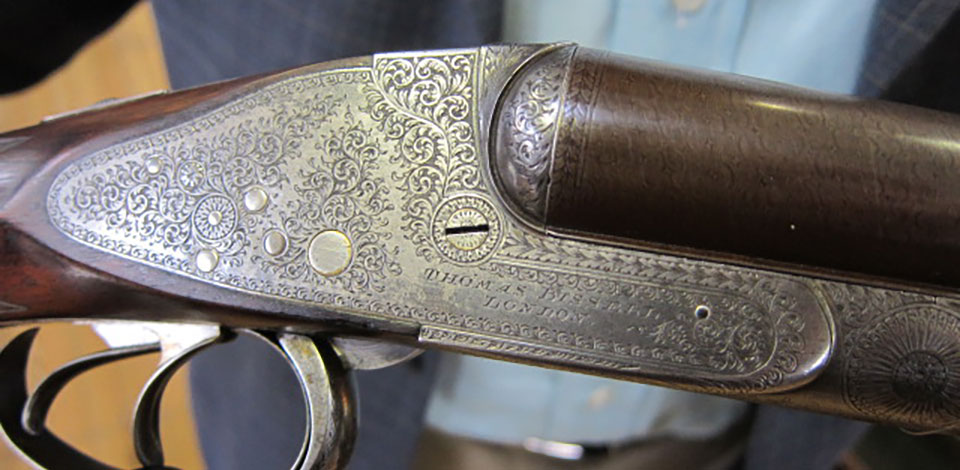
In 1879, John Rigby had been operating in London since 1865 and the action for which the company would come to be best known was lodged in collaboration with a London gun-maker called Thomas Bissell.
The patent was registered as No.1141 of 1879 and formed Rigby’s distinctive and elegant bolting system, consisting of a Purdey under-bolt, plus a third fastening: a ‘U’-shaped top extension, with a slot machined out of the centre, which is engaged by a rising bolt, The bolt rises from the action to fill the solid ‘U’-shaped cut-out and locks the barrels to the action vertically, in addition to the double horizontal grips provided by the Purdey bolt.
journals from the period contain numerous references to ‘Mr Bissell’
Rigby’s journals from the period contain numerous references to ‘Mr Bissell’. He is noted as operating from 98 Hollydale Road, Peckham. This is still standing today, a modest end of terrace Victorian house of two stories, with a small garden. His home was six miles from Rigby's shop in St James's.
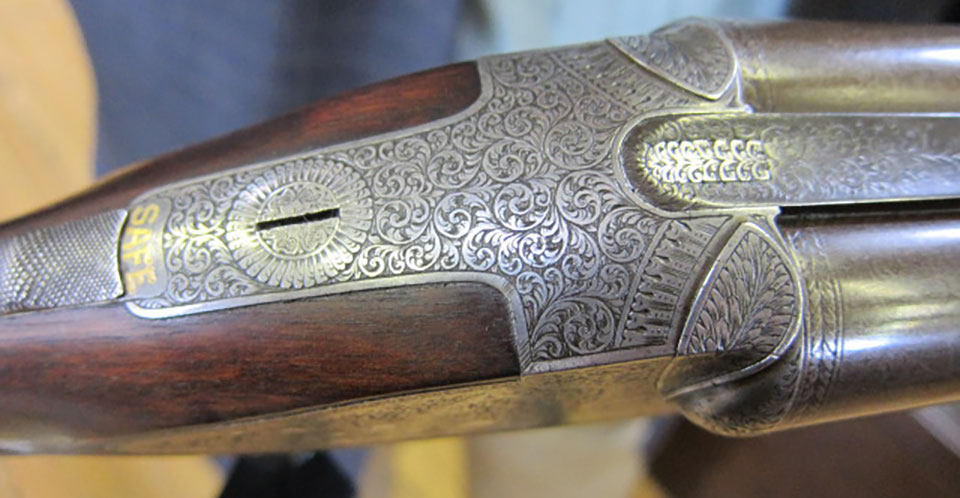
Bissell was clearly what we generally call a ‘maker to the trade’. He operated independently and furnished what we might call ‘retail gunmakers’(men with the money, name and retail premises necessary to trade successfully to the public) with gunmaking services.
This was not at all unusual. Many of these out-workers forged relationships with the famous firms and contributed to their fame and advancement by selling the proprietor a particular invention, or co-patenting one, which then became known as particular to that maker.
Examples of such relationships include John Emme’s collaboration with James Woodward, Edwin Hodges’ partnership with Stephen Grant and John Robertson’s business with, and subsequent take-over of, Boss.
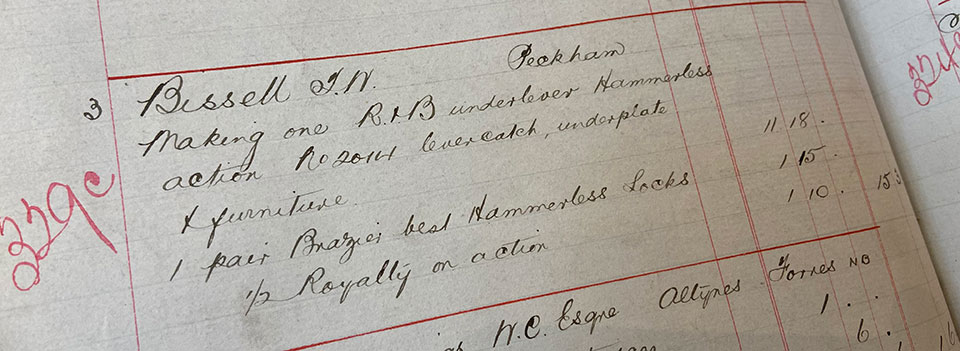
An entry from 1886 shines a light on the nature of the Rigby-Bissell relationship. On 3rd July, it reads: ‘Bissell, T.W. Peckham. Making one R&B underlever Hammerless action No.2014, lever-catch, underplate & furniture’ (£11. 18s. 0d), ‘1 pair of Brazier’s best hammerless locks’ (£1. 15s. 0d). It also note ‘1/2 Royalty on action’ (£1.10s 0d).
we can see exactly what actioning work Bissell was carrying out for Rigby
From this we can see exactly what actioning work Bissell was carrying out for Rigby. We also know what the Royalty payment due for each gun built on his patent was. If a half-payment was £1.15s.0d, then a full Royalty was twice that (£3. 15s. 0d).
The reason for the half-Royalty was that Rigby and Bissell were co-patentees; each entitled to half the Royalty money. Here we have Rigby paying Bissell for his half Royalty for a gun made and sold by Rigby.
If another firm, say Purdey, wanted to build a Rigby & Bissell patent action, they would have to pay Rigby his fee and Bissell his fee; a total of £3.15.s. 0d. These royalties were important generators of alternative mechanical designs, each gunmaker trying hard not to have to pay a royalty to a rival every time he built a new gun. As patent protection and the associated royalty fees demised, only the best designs survived.
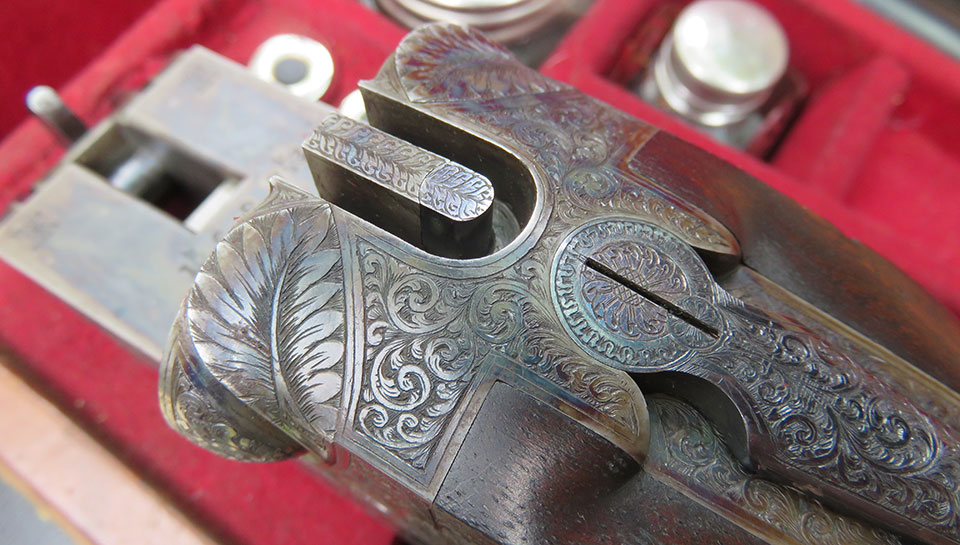
The Rigby & Bissell action was made as a shotgun and as a double rifle, surviving well into the 20th century. It was discontinued as a shotgun action when the fashion for what we now know as a ’London Pattern Sidelock’ became established.
This style dispensed with third bites for ordinary game guns and became the aesthetic adopted by all the best London makers, while third grips persisted among Birmingham gunmakers, especially for lower grade guns, where the extra grip offered reassuring security when there may have been a worry over quality. Of course, a complex shape, with multiple mating surfaces is also more difficult, time consuming and costly to manufacture.
Westley Richards remained true to their combination of doll’s head and Purdey Bolt combination but for most, a Purdey Bolt was all they considered necessary.
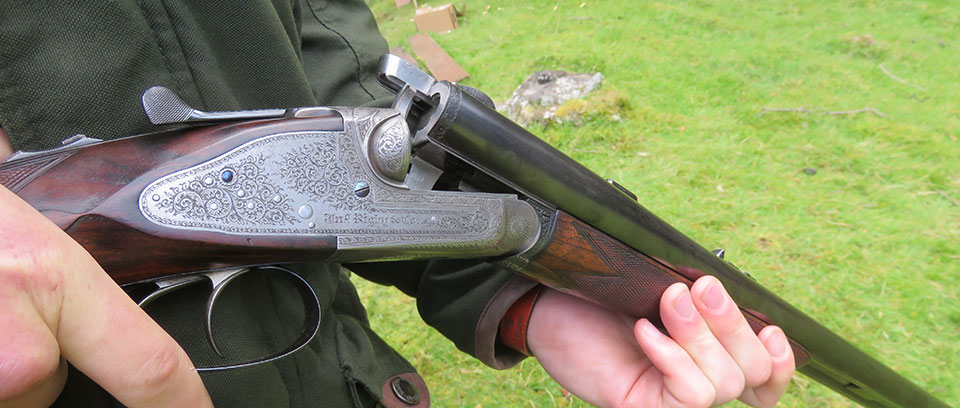
Pigeon guns and double rifles continued to be made with third grips, as the more powerful charges they fired made the extra hold worthwhile and helped lessen the frequency with which they came ‘off-face’.
By 1934 Rigby described their best shotgun as the ‘Regal’ and explained ‘The action is of the best steel with removable cross pin. A top extension is completely unnecessary for this type of action and the barrels have a flush face’. The best double rifle, as mentioned, remained as a treble grip action.
Rigby recently revived the Bissel-patent Vertical Bolt and now offer it as a shotgun and a double rifle action, in all available chamberings. It has proven very popular and is widely admired as one of the most beautifully engineered double actions of all time.
Published by Vintage Guns Ltd on




